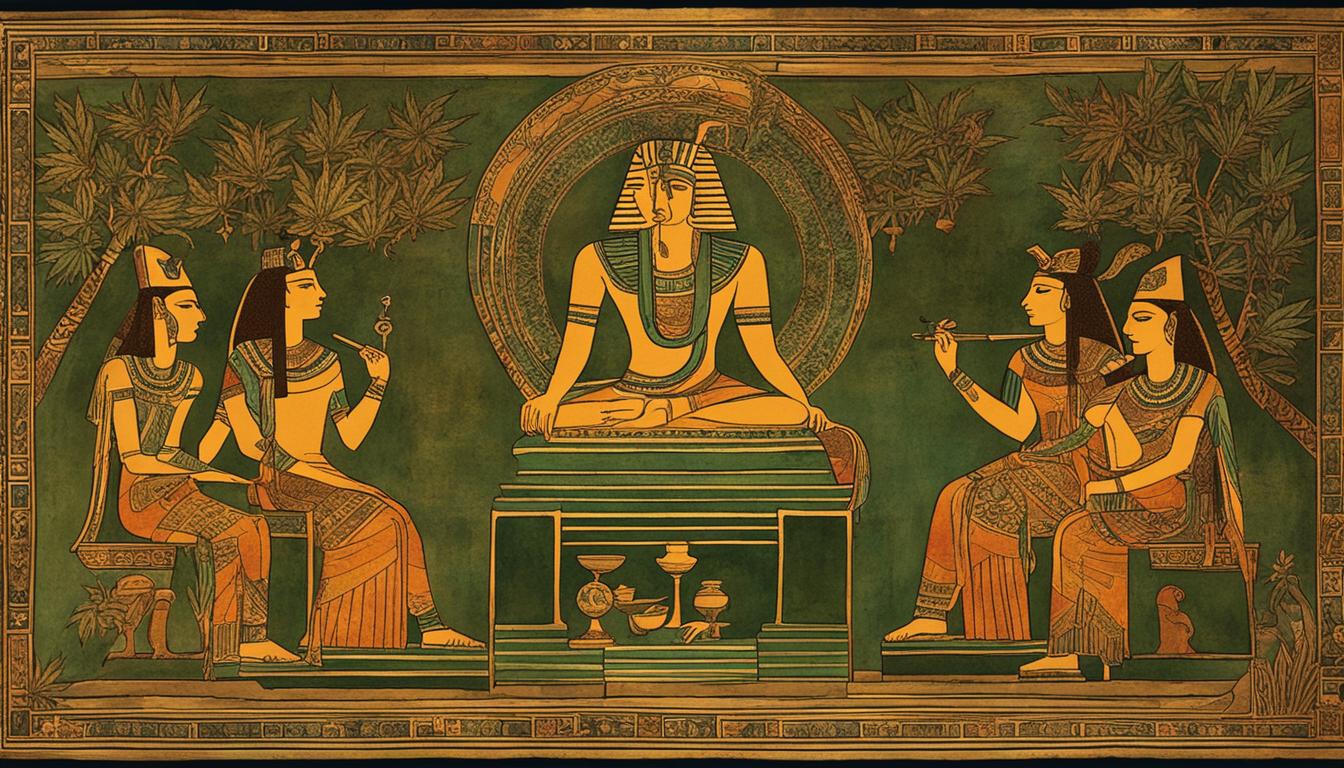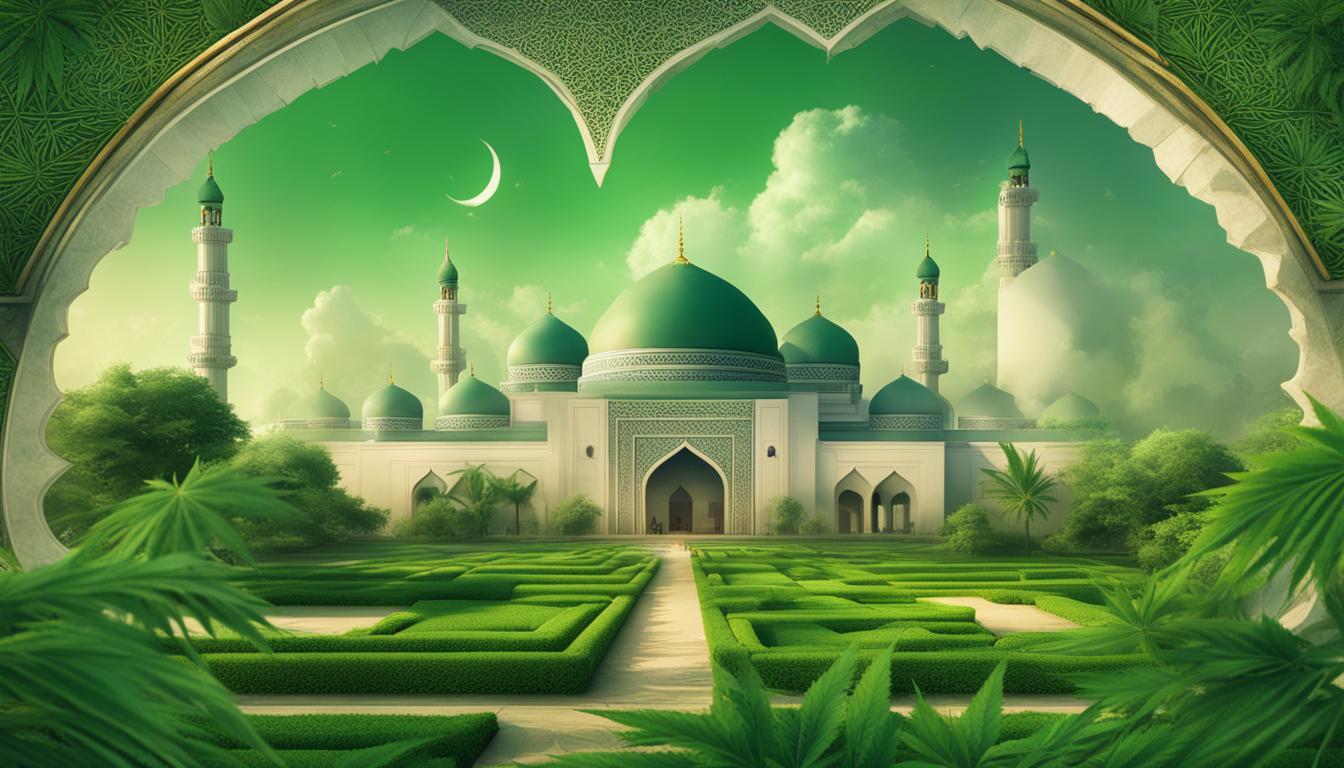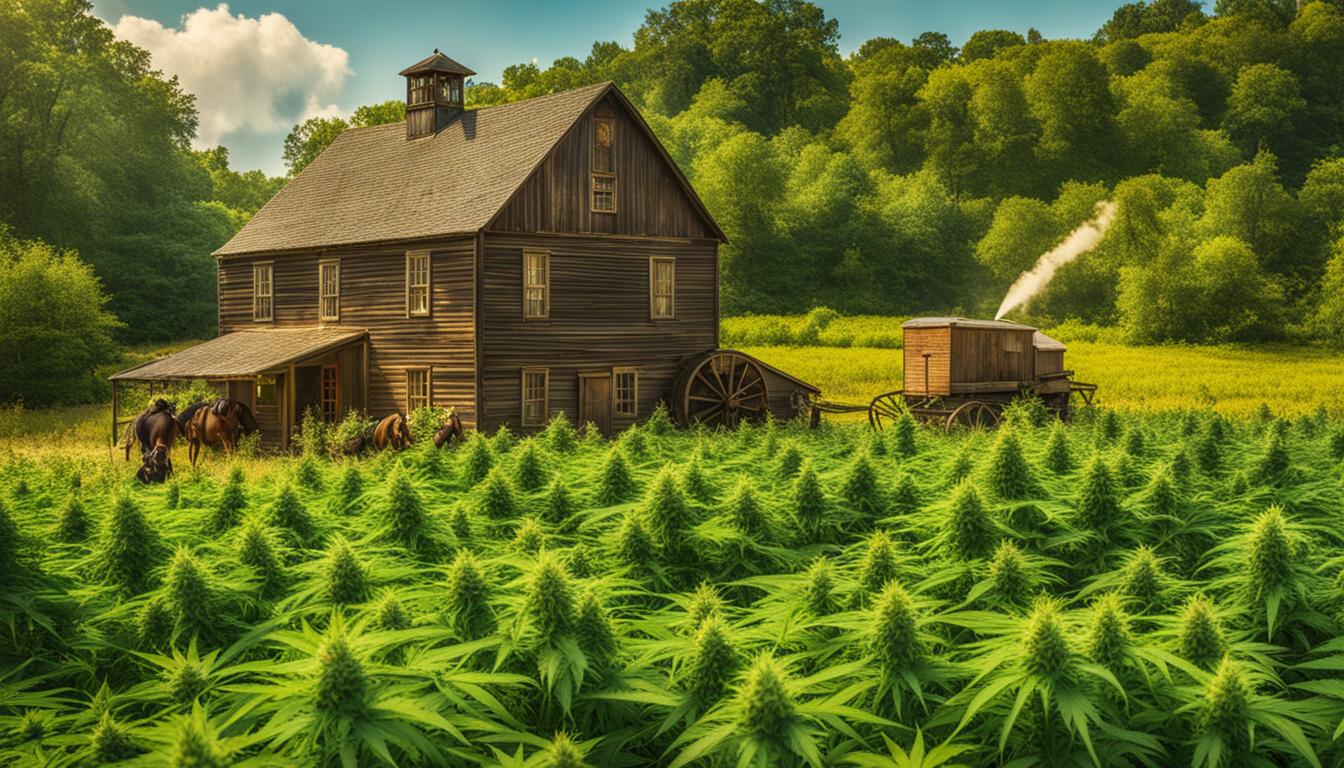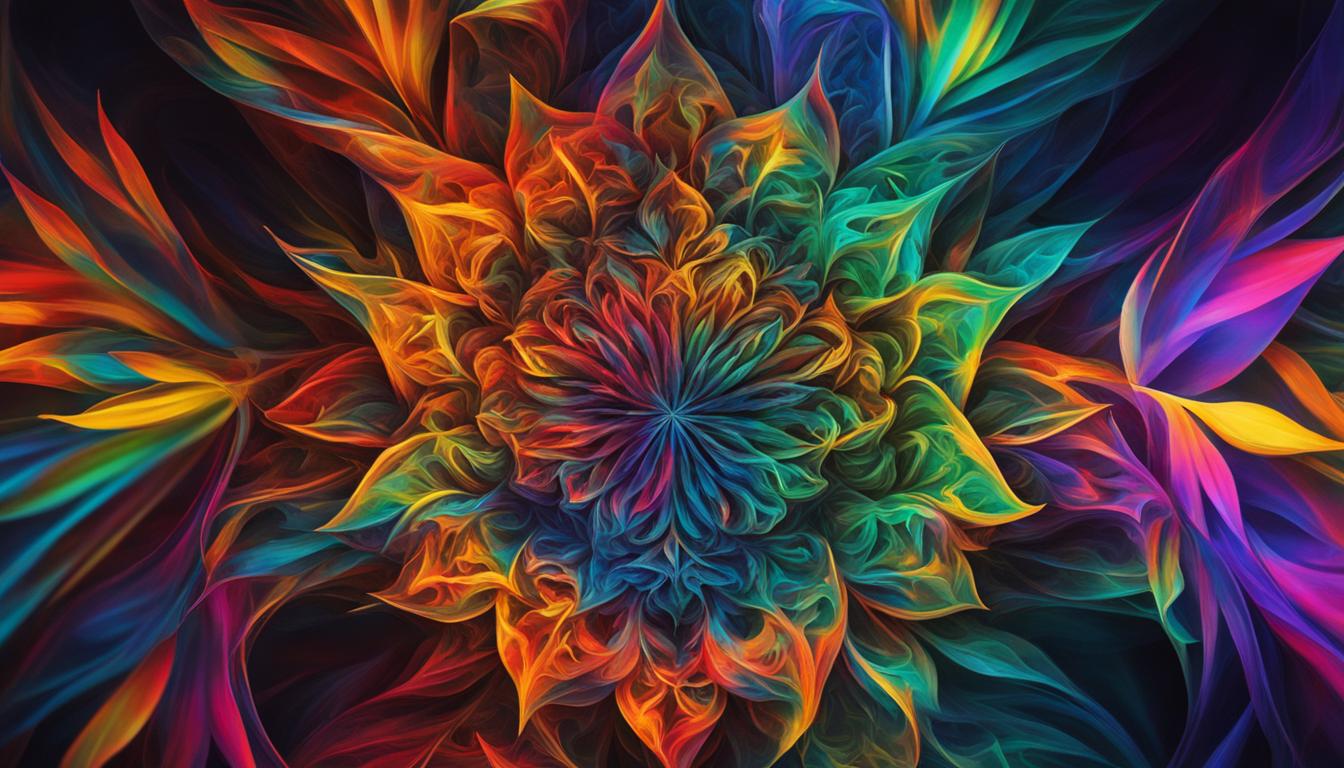Cannabis in the Islamic Golden Age
In the Islamic Golden Age, cannabis played a pivotal role in shaping the culture, science, and philosophy of the time. Its influence can be traced back to the 5th century, where it gained prominence in the prescriptions of Arab doctors. Cannabis was not only used for medicinal purposes but also found its way into the rituals of Persian mystical orders, particularly the Sufis, who incorporated it into their dance.
This fragrant plant, also known as hashish, held a significant place in society, even giving rise to the Hashashins sect. It was mentioned in historical texts, including the book of the Kings by Persian poet Firdusi, highlighting its prevalence and acceptance.
Throughout the Islamic Golden Age, cannabis was celebrated for its cultural significance. It inspired poets and writers, who referenced it in their works, using it as a symbol and metaphor. The plant’s depiction in Islamic art further showcased its importance and creativity during this flourishing period of intellectual and artistic achievement.
In the realm of science and medicine, cannabis was extensively studied and explored by Arab scholars. They recognized its medicinal properties and made significant advancements in pharmacology, documenting its effects and potential uses in medical treatments. The widespread use and trade of cannabis contributed to the economic prosperity of Islamic civilizations during this time.
The impact of cannabis on Islamic philosophy cannot be overlooked. Some philosophers incorporated its use into their spiritual practices, believing it enhanced their meditation and provided them with deeper insights into spiritual truths.
The legacy of cannabis in the Islamic Golden Age continues to inspire curiosity and intrigue among researchers, historians, and enthusiasts alike. Its multifaceted contributions to medicine, culture, and philosophy reflect the openness and diversity of Islamic societies during this remarkable era.
Medicinal Use of Cannabis in the Islamic Golden Age
Cannabis played a crucial role in the field of medicine during the Islamic Golden Age. Arab doctors widely recognized its medicinal properties and frequently prescribed it as an effective remedy for various ailments. The historical texts and writings of Arab scholars from this era provide evidence of the extensive use of cannabis in medical treatments. These scholars, who translated Greek medical texts, not only acknowledged the medicinal benefits of cannabis but also cautioned against potential complications.
The medicinal use of cannabis in the Islamic Golden Age extended beyond the realm of conventional medicine. It found particular popularity among the fakirs of Islam, who referred to it as “hashishat alfokora” – the grass of the fakirs. These fakirs believed that cannabis had unique properties that could enhance their spiritual experiences and provide them with a deeper connection to their faith.
“Cannabis has long been regarded as a powerful medicinal herb in our civilization. Its use in medical treatments has been widespread and its efficacy celebrated by both doctors and patients.” – Islamic scholar
The medicinal use of cannabis during the Islamic Golden Age demonstrates the advanced knowledge and understanding of Arab doctors and scholars. It also highlights the integration of cannabis into the medical practices and cultural beliefs of Islamic societies at that time.
| Medicinal Uses of Cannabis in the Islamic Golden Age | Benefits |
|---|---|
| Pain Relief | Provided effective relief from various types of pain, including headaches, migraines, and joint pain. |
| Anti-inflammatory | Reduced inflammation associated with conditions such as arthritis and respiratory disorders. |
| Sleep Aid | Induced relaxation and sleep, offering relief for those suffering from insomnia or sleep disturbances. |
| Antiemetic | Alleviated nausea and vomiting, making it beneficial for patients undergoing treatments such as chemotherapy. |
The medicinal use of cannabis in the Islamic Golden Age exemplifies the innovative and holistic approach to healthcare during that period. It stands as a testament to the rich history of cannabis and its profound impact on the medical practices of Islamic civilizations.
Cultural Significance of Cannabis in the Islamic Golden Age
Cannabis held great cultural significance in the Islamic Golden Age, permeating various aspects of society. It was not only a plant of practical use but also a symbol of pleasure and enjoyment. The mention of cannabis in literary works, such as the Shahnameh by Persian poet Firdusi, highlights its prevalence in the artistic and cultural expressions of the time.
In Islamic art, cannabis found its place in paintings, illustrations, and calligraphy. The visual representation of cannabis in these artworks showcased its cultural importance and the creativity of the artists. Through its inclusion, cannabis became intertwined with the visual narrative of Islamic art, adding depth and symbolism to the compositions.
The use of cannabis in poetry and songs further exemplified its cultural significance in the Islamic Golden Age. Poets and musicians celebrated cannabis, using it as a poetic device and a metaphor for happiness and euphoria. These verses and melodies resonated with the people, enabling them to connect with the joyous aspects of life.
The cultural significance of cannabis in the Islamic Golden Age cannot be underestimated. It was not merely a botanical specimen but a vessel for artistic expression, a symbol of enjoyment, and a muse for poets and artists. Its integration into various facets of the society underscored the openness and diversity of Islamic civilizations during this remarkable era.
Cannabis in Islamic Art and Literature
Cannabis had a profound influence on Islamic art and literature during the Golden Age. It was not only depicted visually but also referenced in literary works. Poets and writers drew inspiration from cannabis, incorporating it into their verses to evoke emotions and convey deeper meanings.
The use of cannabis as a symbol or metaphor in Islamic literature reflected the societal interpretation of the plant. It represented more than a simple physical entity but rather embodied the concept of joy, pleasure, and spiritual exploration. By weaving cannabis into their narratives, writers were able to explore and celebrate the various dimensions of human experience.
“Like cannabis blossoms, we embrace life with open hearts, dancing through the fields of ecstasy,” exclaimed the Persian poet Rumi in one of his enchanting verses, capturing the essence of cannabis’s role in Islamic literature.
Through its inclusion in Islamic art and literature, cannabis became immortalized as a cultural touchstone, resonating with audiences across generations. Its enduring legacy is a testament to the influence it had on the artistic and intellectual expression of the Islamic Golden Age.
Cannabis in Islamic Science and Medicine
Cannabis played a significant role in Islamic science and medicine during the Golden Age. Arab scholars dedicated themselves to studying the medicinal properties of cannabis, leading to groundbreaking discoveries and advancements in the field of pharmacology. These pioneers documented the effects and potential uses of cannabis in medical treatments, contributing to the advancement of healthcare in Islamic civilizations.
The Islamic Golden Age witnessed remarkable inventions related to cannabis and its derivatives. These inventions revolutionized the understanding and application of cannabis in medicine. One such invention was the creation of a cannabis-based ointment that effectively relieved pain and inflammation. This development opened new possibilities for the treatment of various ailments and added to the growing body of medical knowledge during this period.
The innovative spirit of Islamic scientists extended beyond medicine. They also explored the use of cannabis in other scientific disciplines. For example, they discovered methods to extract essential oils from cannabis, which laid the foundation for advancements in perfumery. These findings not only enriched the field of science but also influenced the artistic and cultural practices of the Islamic Golden Age.
| Inventions in Islamic Science and Medicine Related to Cannabis | Contributions |
|---|---|
| The creation of a cannabis-based ointment for pain relief | Pioneered the development of effective medical treatments |
| The extraction of essential oils from cannabis | Advanced the field of perfumery and fragrance production |
Through their relentless pursuit of knowledge and their willingness to explore new frontiers, Islamic scientists and scholars made invaluable contributions to the understanding and application of cannabis in science and medicine. Their groundbreaking discoveries and inventions during the Golden Age continue to inspire and shape our understanding of cannabis today.
Cannabis and Islamic Philosophy
Cannabis had a fascinating influence on Islamic philosophy during the Golden Age. Some philosophers embraced the use of cannabis as a tool to enhance their spiritual practices and deepen their understanding of philosophical truths. They believed that cannabis could facilitate meditation and induce a heightened state of consciousness, allowing them to connect with the divine and gain profound insights into the nature of existence.
Islamic philosophers who explored the relationship between cannabis and philosophy believed that the plant possessed mystical properties that could facilitate transcendental experiences. They saw cannabis as a means to explore the boundaries of human consciousness and challenge traditional philosophical concepts. Through the use of cannabis, they sought to attain a greater understanding of the self, the universe, and the divine.
“Cannabis holds the key to unlocking the secrets of the universe. It is a tool that allows us to bridge the gap between the physical and the metaphysical, the seen and the unseen.” – Islamic philosopher
The integration of cannabis into Islamic philosophy reflected the diverse interpretations and beliefs within the Islamic world during the Golden Age. It showcased the willingness of Islamic philosophers to explore alternative avenues of thought and to challenge established norms. The use of cannabis as a philosophical tool provided a new perspective on the nature of reality and existence, fostering intellectual curiosity and inspiring further philosophical exploration.
The Role of Cannabis in Islamic Philosophy
The role of cannabis in Islamic philosophy extended beyond mere recreational or indulgent use. Islamic philosophers regarded cannabis as a sacred herb that had the power to stimulate spiritual growth and enlightenment. They believed that the plant could help them transcend the limitations of the physical world and gain a deeper understanding of the metaphysical realms.
- Cannabis facilitated introspection and self-reflection, allowing individuals to explore their innermost thoughts and emotions.
- It was seen as a means to achieve a state of heightened awareness and transcend ordinary consciousness.
- Islamic philosophers used cannabis to stimulate philosophical discussions and debates, encouraging the exchange of ideas and the exploration of new concepts.
- The plant was believed to enhance creativity and inspire profound insights, leading to the development of new philosophical theories and perspectives.
The Legacy of Cannabis in Islamic Philosophy
The influence of cannabis on Islamic philosophy during the Golden Age left a lasting legacy. It demonstrated the openness and intellectual curiosity of Islamic thinkers, as well as their willingness to explore unconventional ideas and practices in their quest for knowledge and enlightenment. The integration of cannabis into philosophical discourse challenged traditional modes of thinking, fostering a culture of philosophical inquiry and innovation.
The legacy of cannabis in Islamic philosophy continues to inspire contemporary scholars and philosophers. It serves as a reminder of the rich intellectual heritage of the Islamic Golden Age and the contributions made by Islamic thinkers to the fields of philosophy, science, and spirituality. The exploration of cannabis within the context of Islamic philosophy offers valuable insights into the diversity and complexity of philosophical thought within the Islamic world.
Cannabis in Islamic Art and Literature
Cannabis had a significant presence in Islamic art and literature during the Golden Age. It was not only depicted in paintings and illustrations but also used as a symbol and metaphor in various literary works. The inclusion of cannabis in Islamic art and literature reflects the cultural significance and creativity of artists and writers of that time. This integration of cannabis into artistic expression demonstrates the openness and diversity of Islamic societies during the Golden Age.
“The intoxicating scent of cannabis filled the air, as if the very essence of poetry and art had taken tangible form.”
Islamic poets and writers drew inspiration from cannabis, using its imagery to evoke emotions and explore different themes. The herb became a tool for self-expression and a way to connect with nature and the spiritual realm. This intertwining of cannabis with art and literature highlights its profound influence on the creative minds of the Golden Age.
Furthermore, cannabis served as a subject of admiration and fascination in Islamic literature. Its mention in poems and stories conveyed the joy, pleasure, and beauty associated with the herb. Writers celebrated the sensory experience of consuming cannabis, emphasizing its ability to heighten perception and evoke a sense of transcendence.

The use of cannabis in Islamic art and literature not only captured the essence of the Golden Age but also provided a window into the cultural, spiritual, and philosophical beliefs of Islamic civilizations during that time. It remains a testament to the rich heritage and intellectual curiosity that defined the Islamic Golden Age.
Islamic Golden Age Cannabis Trade
The Islamic Golden Age witnessed a flourishing cannabis trade throughout the Islamic world. Cannabis cultivation and trade played a significant role in the economic prosperity of Islamic civilizations during this era. The availability and exchange of cannabis and its derivatives facilitated its widespread use and popularity.
Trade routes allowed for the movement of cannabis across various regions, from North Africa to the Middle East and beyond. Merchants and traders transported cannabis products, including hemp fibers, oils, and medicinal preparations, to meet the growing demand in different markets. The cannabis trade was not only a source of income but also a means of cultural exchange and connection between Islamic societies.
Interestingly, the cannabis trade during the Islamic Golden Age was not limited to local markets. Muslim merchants actively engaged in long-distance trade, connecting the Islamic world with other regions such as Europe, Asia, and Africa. This facilitated the spread of cannabis knowledge, consumption patterns, and cultural practices related to its use.
| Trade Routes | Region | Main Cannabis Products |
|---|---|---|
| Trans-Saharan | North Africa, West Africa, Sahel | Hemp fibers, cannabis seeds, oils |
| Indian Ocean | South Asia, Southeast Asia, East Africa | Medicinal preparations, cannabis resin |
| Silk Road | Central Asia, China | Hemp textiles, cannabis seeds |
| Mediterranean | Europe, Middle East | Hemp fibers, cannabis oils, culinary ingredients |
“The cannabis trade during the Islamic Golden Age not only fostered economic growth but also served as a catalyst for cultural exchange and innovation.” – Dr. Ahmed Hashimi, Historian
The cannabis trade during the Islamic Golden Age thus played a crucial role in the interconnectedness of Islamic civilizations and their engagement with the wider world. It contributed to the economic vitality, cultural diversity, and intellectual curiosity that characterized this remarkable period in history.
Cannabis and Islamic Civilizations
In the Islamic Golden Age, cannabis had a profound impact on Islamic civilizations, permeating various aspects of society and leaving an indelible mark on their intellectual and cultural development. The widespread use and acceptance of cannabis during this period reflected the openness and diversity of Islamic societies, fostering an environment of tolerance and intellectual curiosity.
The medicinal properties of cannabis were recognized and utilized by Arab doctors, who prescribed it as an effective remedy for a range of ailments. Its use in medical treatments spread throughout the Islamic world, with fakirs of Islam referring to it as “hashishat alfokora,” meaning “the grass of the fakirs.” Cannabis played a crucial role in the field of pharmacology during the Golden Age, with Islamic scholars making significant advancements in understanding its effects and potential uses.
Cannabis not only found its place in medicine but also in the cultural and artistic expressions of Islamic civilizations. It was celebrated in poetry, songs, and literary works, becoming a symbol of pleasure and enjoyment. Artists and writers incorporated cannabis into their creations, depicting it in paintings, illustrations, and calligraphy, further highlighting its significance and the creativity of Islamic artists.
The integration of cannabis into Islamic philosophy during the Golden Age demonstrated the varying interpretations and beliefs within the Islamic world. Some philosophers believed that the use of cannabis enhanced their meditation and provided them with a deeper understanding of spiritual truths. This incorporation of cannabis into spiritual practices reflected the diverse and nuanced nature of Islamic philosophy.
| Aspect | Impact |
|---|---|
| Medicine | A wide range of medical applications and advancements in pharmacology. |
| Culture | Celebration of cannabis in poetry, songs, and literary works. |
| Art | Incorporation of cannabis into paintings, illustrations, and calligraphy. |
| Philosophy | Influence on spiritual practices and deeper contemplation. |
Conclusion
The Islamic Golden Age was a time of great intellectual and cultural flourishing, and cannabis played a significant role in this era. From its medicinal use to its cultural significance and impact on philosophy, cannabis permeated through various aspects of Islamic society.
Arab doctors recognized the medicinal properties of cannabis and frequently prescribed it to treat various ailments. Islamic scholars made significant advancements in pharmacology, documenting the effects and potential uses of cannabis in medical treatments. Furthermore, cannabis found its way into Islamic art and literature, becoming a symbol of pleasure and enjoyment.
Cannabis also influenced Islamic philosophy, with some philosophers incorporating its use into their spiritual practices. They believed that cannabis could enhance their meditation and provide them with a deeper understanding of spiritual truths.
The use of cannabis in the Islamic Golden Age reflects the openness and diversity of Islamic civilizations. It demonstrates a society that embraced different cultural and intellectual traditions, leading to advancements in science, literature, and art.
The legacy of cannabis in the Islamic Golden Age continues to fascinate researchers, historians, and enthusiasts. Its multifaceted role in medicine, culture, and philosophy highlights the tolerance and intellectual curiosity of Islamic civilizations during this remarkable period in history.
FAQ
Was cannabis used in the Islamic Golden Age?
Yes, cannabis was used in the Islamic Golden Age for medicinal, cultural, and spiritual purposes.
When did cannabis come into use during the Islamic Golden Age?
Cannabis began to be used in the 5th century and became more prominent in the prescriptions of Arab doctors.
How was cannabis used in medicine during the Islamic Golden Age?
Arab doctors frequently prescribed cannabis for various ailments, recognizing its medicinal properties and potential complications.
Did cannabis have cultural significance during the Islamic Golden Age?
Yes, cannabis was celebrated in poetry, songs, and artwork, becoming a symbol of pleasure and enjoyment.
Did cannabis play a role in Islamic science and medicine?
Yes, Arab scholars studied the medicinal properties of cannabis, made advancements in pharmacology, and developed new inventions related to cannabis.
How did cannabis influence Islamic philosophy during the Golden Age?
Some philosophers incorporated the use of cannabis into their spiritual practices and rituals, believing it enhanced meditation and provided deeper understanding of spiritual truths.
Was cannabis depicted in Islamic art and literature during the Golden Age?
Yes, cannabis was often depicted in paintings, illustrations, and calligraphy, and it was referenced in poetry and literature as a symbol or metaphor.
Did cannabis have a significant role in trade during the Islamic Golden Age?
Yes, cannabis was cultivated and traded in various regions of the Islamic world, contributing to the economic prosperity of Islamic civilization.
What was the overall impact of cannabis on Islamic civilizations during the Golden Age?
Cannabis was widely used and accepted in various aspects of society, reflecting the openness and diversity of Islamic civilization during this period.














